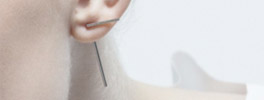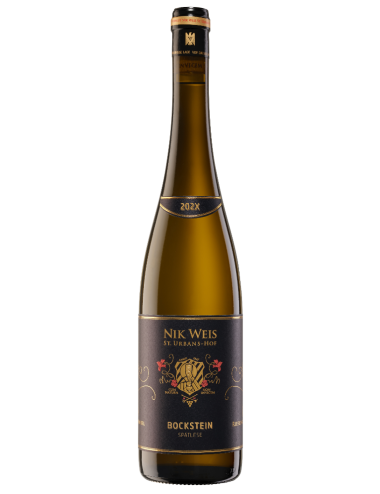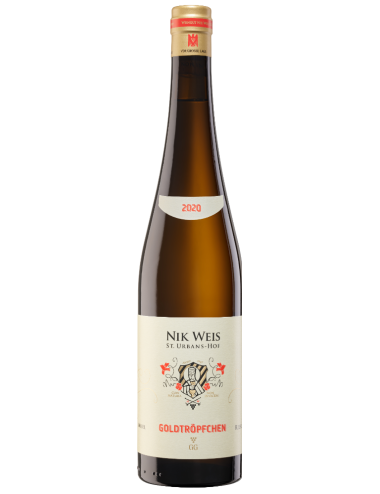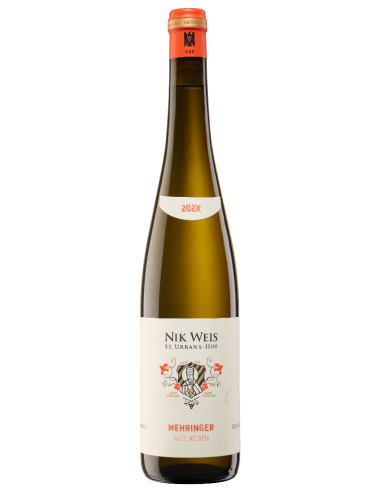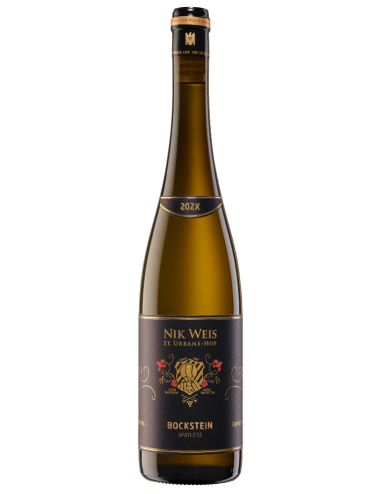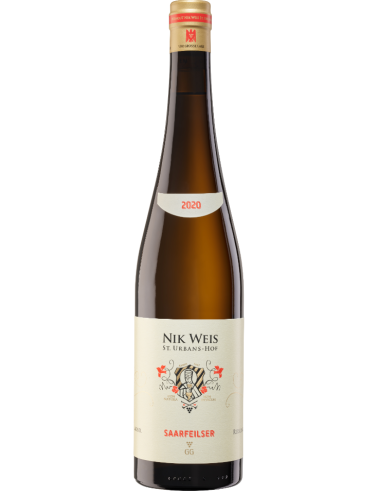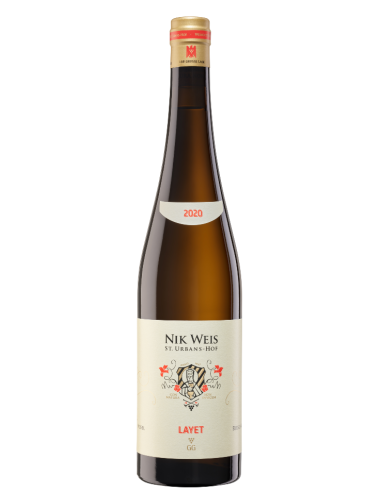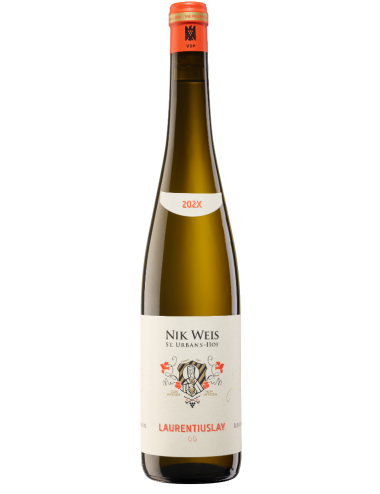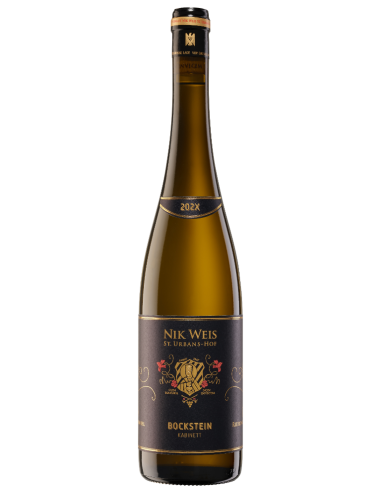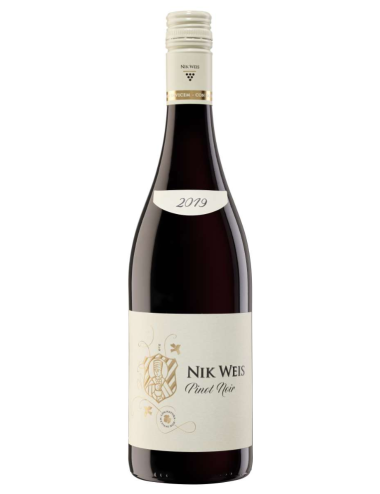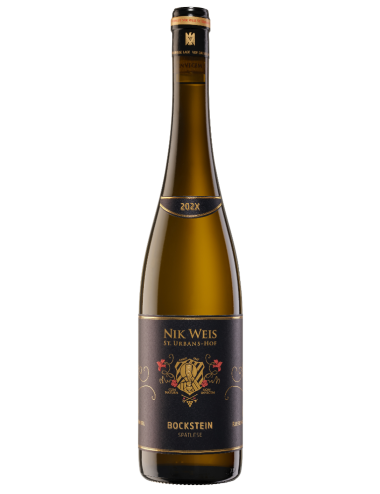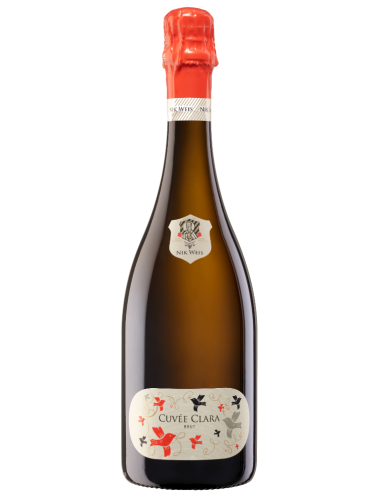
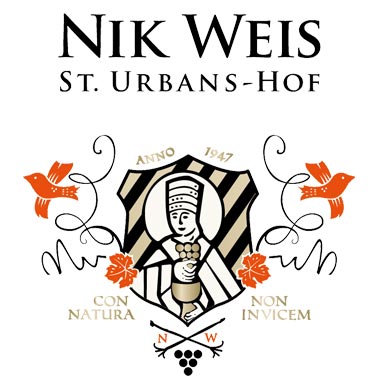
Wine estate Nik Weis - St. Urbanshof
The Riesling winery Nik Weis - St. Urbans-Hof in Leiwen on the Mosel is run by Nik Weis and his family in the third generation. Since 2000, the winery has been a member of the renowned Association of German Prädikat Wine Estates (VDP).
-
Nik Weis - St. Urbans Hof
Goldtröpchen Spätlese (late harvest) Riesling 2020
 Riesling
Riesling
 Fruity
€ 27.50
Fruity
€ 27.50 -
-
Nik Weis - St. Urbans Hof
Goldtröpfchen Grosses Gewächs (Grand Cru) Riesling 2022
 Riesling
Riesling
 Dry
€ 36.00
Dry
€ 36.00 -
-
-
Nik Weis - St. Urbans Hof
Saarfeilser Grosses Gewächs (Grand Cru) Riesling 2022
 Riesling
Riesling
 Dry
€ 36.00
Dry
€ 36.00 -
-
Nik Weis - St. Urbans Hof
Laurentiuslay Grosses Gewächs (Grand Cru) Riesling 2022
 Riesling
Riesling
 Dry
€ 48.00
Dry
€ 48.00 -
-
Nik Weis - St. Urbans Hof
Bockstein Auslese (sélection) Riesling 2022 noble sweet
 Riesling
Riesling
 Noble sweet
€ 35.00
Noble sweet
€ 35.00
-
Nik Weis - St. Urbans Hof
Cuvée Clara - Sparkling wine dry - Nik Weis
 Chardonnay/Pinot Noir/Riesling
Chardonnay/Pinot Noir/Riesling
 Méthode champenoise
€ 22.00
Méthode champenoise
€ 22.00
No Product found in this category
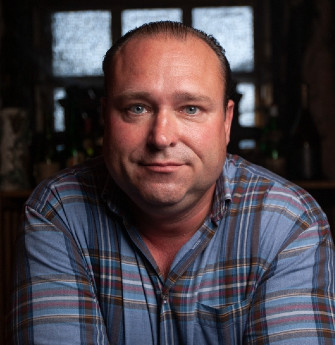
World famous Riesling wines from the river Saar and Moselle
The St. Urbanshof estate was founded by Nikolaus Weis in Leiwen in 1947 and has fantastic sites on the Moselle and Saar. Only Riesling is grown on the steep, slatey sites of Ockfener Bockstein, Leiwener Laurentiuslay, Piesporter Goldtröpfchen and Wiltinger Schlangengraben. The wines of Nik Weis always show the elegant lightness of their origin and the typical spiciness. The approx. 45 ha of vineyards extend for around 60 km along the Moselle and Saar rivers and are cultivated in the traditional way in harmony with nature. Of the prestigious single vineyard sites where world-class Rieslings grow, five are classified as VDP.Grosse Lage.
Read More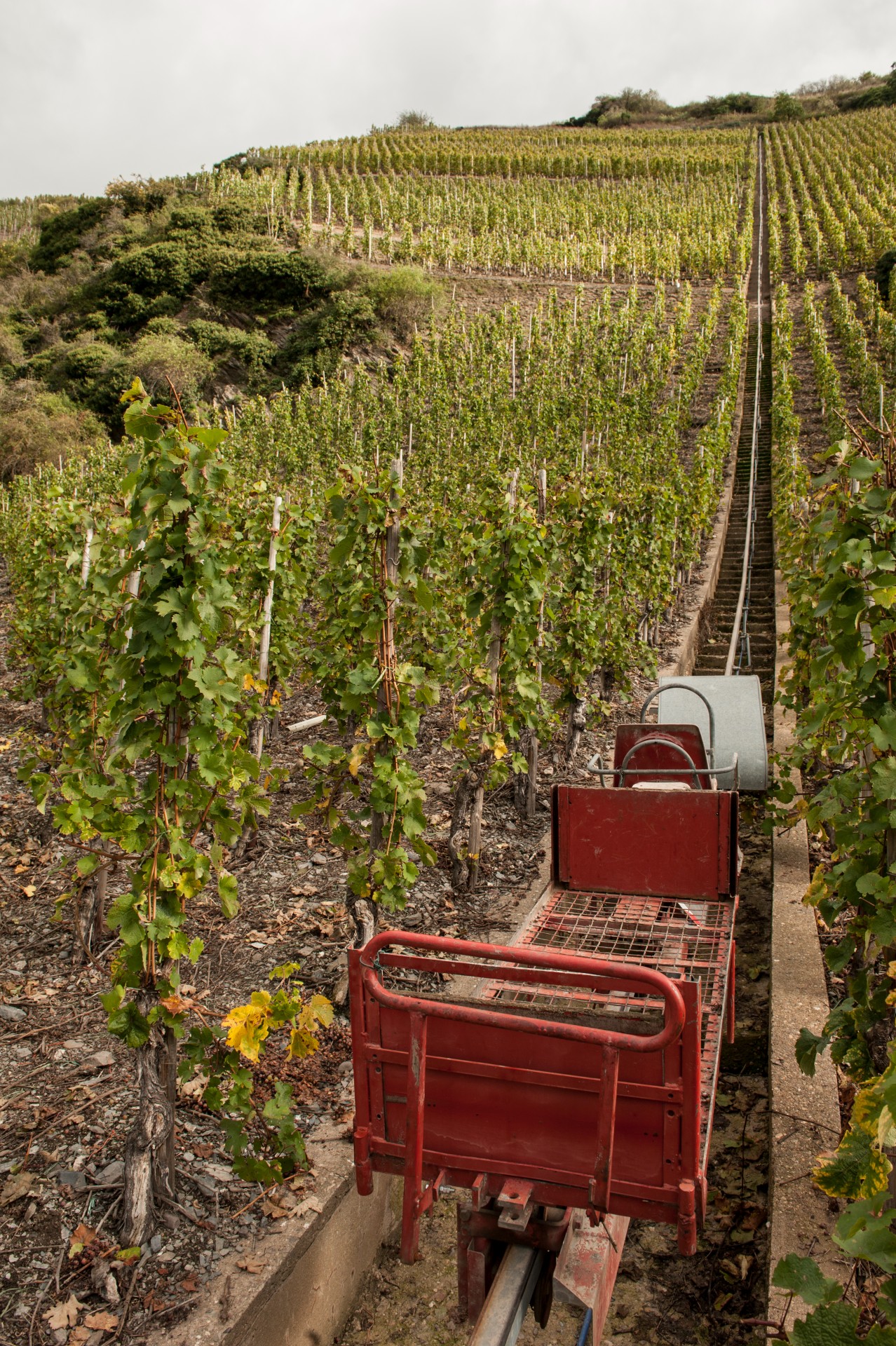
Superb Riesling wines from premium vineyards
Nik Weis grew up with viticulture. Consequently, he studied viticulture and enology and gained a lot of experience abroad. A good 20 years ago, in 1997, he took over today's Nik Weis St. Urbans-Hof winery from his parents. A lot has happened since then. The wines from the Nik Weis St. Urbans-Hof winery have already won several awards on a regular basis. The wines have received awards from Johnson and Feinschmecker, for example, and more recently from Gault Millau and Eichelmann. Hermann Jostock is responsible for the external operation and the marketing of the wines. The team from the Nik Weis St. Urbans-Hof winery creates great and authentic Moselle wines that enjoy an excellent international reputation among wine connoisseurs. In the dry, but also in the noble sweet range, the estate is among the absolute top Riesling producers.
Tradition meets Modernity
The six top vineyards of St. Urbans-Hof are called Schodener Saarfeilser Marienberg, Wiltinger Schlangengraben, Ockfener Bockstein, Leiwener Laurentiuslay, Mehringer Layet and Piesporter Goldtröpfchen. This is where the old vines grow from which winery owner Nik Weis, together with his cellar masters Tobias Busch and Rudolf Hoffmann, presses the widely appreciated Prädikat wines.
There is no standing still in viticulture either. At the Nik Weis St. Urbans-Hof estate, traditional viticulture is combined with innovation and modernity in the best possible way. Some of the estate's vines are well over a hundred years old, yet they provide the material for modern wines with very different components. Aromas of apples and peaches sometimes give the wines a fruity, all-natural sweetness and a great finish. A total of 300,000 bottles of high-quality wines with the Fair'n'Green seal are produced each year.
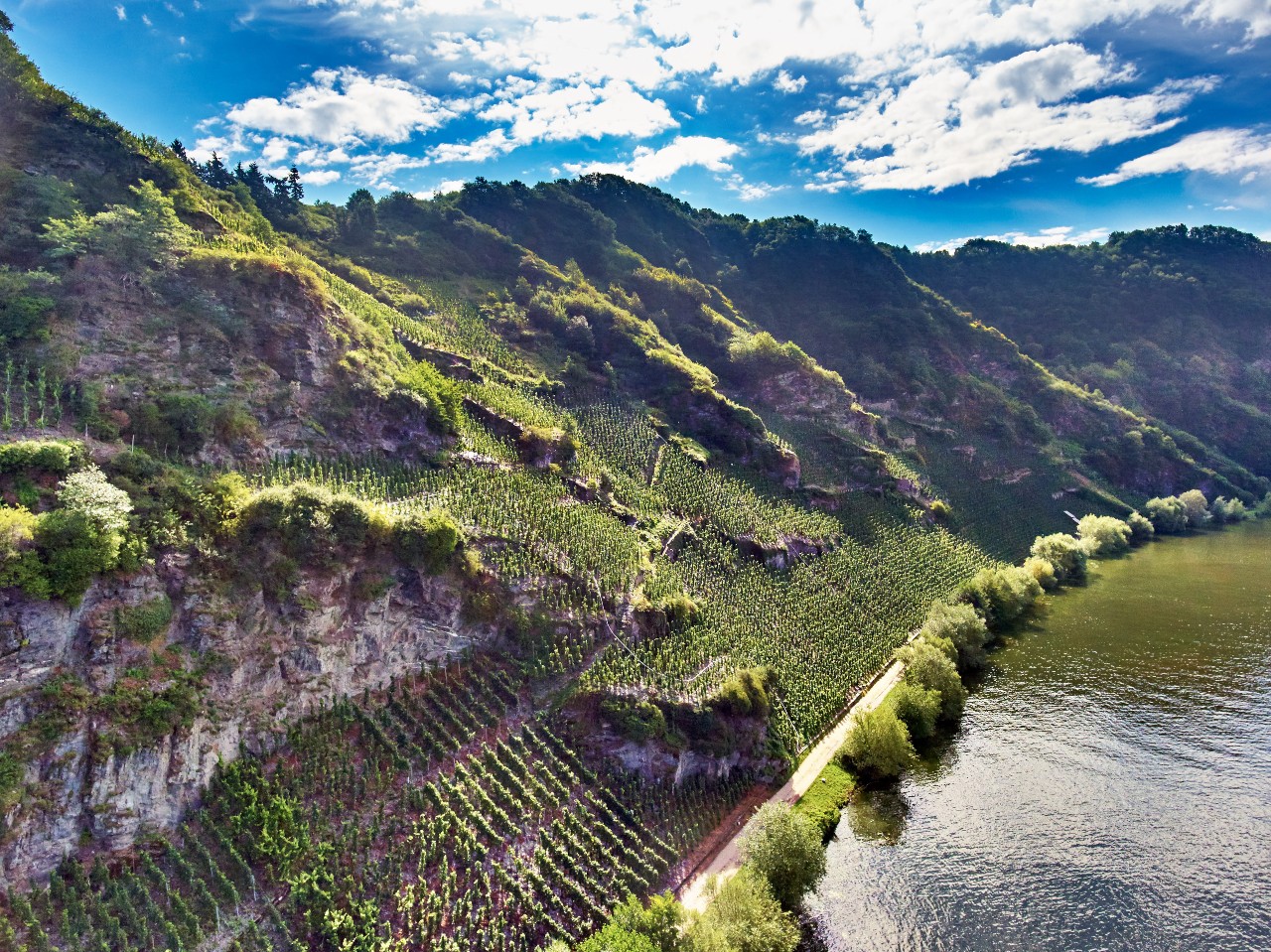
The vineyards of Nik Weis' wine estate
SAARFEILSER GG The vineyard
The Saar site Schodener Saarfeilser Marienberg has been owned by our winery since 2001. The 3.2 hectares in the "Saarfeils" form a slope directly bordering the Saar. The name "Feilz" is derived from the Latin "vallis" (valley). Facing completely south, it is one of the warmest sites on the right tributary of the Moselle. The Saar stores the heat and reflects the glistening bright rays of the sun, vines and grapes are surrounded by warmth and light. Here, at a 90° bend where the Saar once changed course immensely, different soils come together. The mixture of young river sediments and old, hard slate rock gives the wines their special lightness.
WILTINGER OLD VINES - The vineyard
The Wiltinger Schlangengraben is located on the Saar River and is considered a very water-rich vineyard site, as quite a few of the mountain's numerous water veins emerge at its foot as small springs. A distinctive feature of the pure southern exposure is the hard red Devonian slate, which owes its coloration to an increased iron content in the soil. The vineyard, planted in 1905, is one of the oldest of its kind. Because it never had to be cleared, parts are still planted with rootless vines. The advantage of so-called old vines: Due to the deep root network, the vines absorb more minerals and nutrients from many soil layers, while the grapes can form many flavors through small berries with a thick skin.
GOLDTRÖPFCHEN GG -The vineyard
The Goldtröpfchen in Piesport is one of the oldest and most prestigious vineyards in the Moselle and in Germany. Due to its centuries-old reputation, the steep slope is also known as a so-called "historic vineyard site". Finds such as a Roman wine press from the 3rd century or historical diatrette glasses testify to an intensive wine history. Our property is located exclusively in two parts of the amphitheater-shaped steep slope, which have not been cleared, where the rugged slate rocks steeply reach the Moselle River. Due to the fact that the vineyards are on small terraces, pure manual work is irreplaceable in all areas. This area of the Goldtröpfchen is not called "Lorelei" without reason and is as impressive scenically as it is ideal for Riesling cultivation. The soft blue Devonian slate and weathered soil stores the sun's heat and charges up with the rocks during the day like a battery. Due to its proximity to the Moselle River, sunlight reflection is very high, which benefits photosynthesis. All in all, the Goldtröpfchen has a warm microclimate for Mosel conditions, which is strongly influenced by the river and slate and favors the formation of fruit aromas in the Riesling. The majority of the wines are vinified accordingly in residual sweetness, with the exception of a dry Grosses Gewächs, which may celebrate its premiere with the 2018 vintage.
LAURENTIUSLAY GG -The vineyard
Laurentiuslay is the warmest vineyard site and has always been considered the most prestigious site in our home community of Leiwen. "Lay" is an old German word for slate and perfectly describes the barren, steep soil. It is precisely because of the steepness and the lack of classic development paths within the site that the numerous terraced sites have been able to remain in their original state. As a result, the vines of our vineyards have a rather high average age and root several meters deep into the barren steep slope. The Gewannbezeichnung, in which vineyards are located, is called Bläsberg, because it is very windy there at all times. This is good for us, because the grapes dry out naturally and can ripen longer on the vine. At the same time, the berries get a thick skin, which is also where most of the aromas are formed. As a result, we harvest Riesling grapes of unique quality every year in the Laurentiuslay, which cover the entire spectrum of first-class Mosel wines from dry VDP.GROSSES GEWÄCHS, to fruity-sweet Spätlesen, to noble-sweet Beeren- and Trockenbeerenauslesen.
BOCKSTEIN GG - The vineyard
Located in a valley foothill of the Saar River, Ockfener Bockstein is a steep south-southwest site that is not deprived of its full number of hours of sunshine by any shadows cast by other mountains. The soil consists mostly of a coarse, bouldery Devonian slate. Because there is a forest on the ridge, the water flow in the Bockstein is extremely good. Today, the Ockfener Bockstein is composed "S-shaped" of a convex and concave part, between which a strict distinction was still made until the site reform in 1971. The majority of our 10 ha property is located in the original convex part of the Bockstein, where some of the most expensive and famous Saar wines used to grow. These fillet pieces named "Zickelgarten", "Neuwies" or "oberster Bockstein" have been the clear top plots of the steep slope for centuries and convey the unique terroir particularly intensively. Wines from the Ockfener Bockstein are characterized by a smoky-mineral character and a fine spiciness. They are probably the most distinctive and polished Rieslings of our winery.
LAYET GG - The vineyard
Since 2006, Nik Weis has owned a parcel of land in the Mehringer Blattenberg that is only 0.8 hectares in size. Until the vineyard reform in 1971, this parcel was called "Layet" and is still considered one of the best vineyard parcels in the Moselle section from Schweich to Neumagen. This parcel, owned for centuries by the Prüm Princely Abbey, passed into the possession of the Prussian Crown after the Napoleonic Wars and was subsequently part of the Friedrich Wilhelm Gymnasium (FWG) winery in Trier, where it most recently enjoyed a reputation as a crown jewel. Over the past 13 years, Nik Weis and his team increasingly found that this parcel was, for good reasons, a site formerly their own, a fact that the VDP recognized as well in 2017, classifying LAYET as a VDP.GROSSE LAGE®. Layet is one of the few historic vineyard sites of the Moselle and has not been cleaned up to this day. The appearance is correspondingly imposing with protruding rocky outcrops and laboriously laid slate terraces on which vineyards with a vine age of up to 100 years thrive. The proximity to the Moselle, which is very wide at this point, favors a light-flooded, warm microclimate in which the vines grow particularly well. The high vine age also promotes the formation of highly aromatic grapes with naturally low yields.
MEHRINGER OLD VINES - The vineyard
Our dry VDP.Ortswein comes from the Mehringer Blattenberg on the Mosel. "Blattenberg" comes from the Latin name abbate plantate, which translates into German as abbot plantation. No surprise, because the vineyards of the steep slope were owned by Prüm Abbey in the Middle Ages. In them grew the best and thus exclusively for the abbot. The particular microclimate is strongly influenced by the immediate proximity to the Moselle River, which, together with the slate soil, has a decisive influence on the thermal balance of the vineyard. The reflection of sunlight in the water increases the vines' photosynthetic capacity, while at the same time the width of the Moselle acts as an extremely good heat accumulator. This width also means that there is no steep slope rising in the immediate vicinity to cast shade or keep the wind out. The latter is especially important for the rapid drying of the grapes after a rain and the hardening of the berry skins.
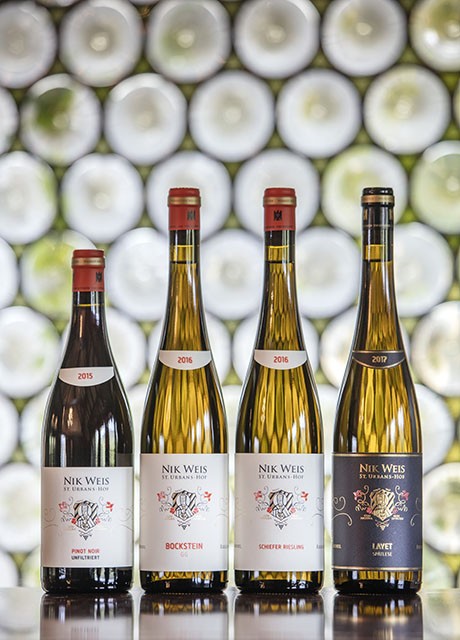
Wine assortment
Riesling
- off-dry
- dry
- Kabinett
- Selection (Auslese)
- Late harvest (Spätlese)
- Grand Cru (Grosses Gewächs)
- Sparkling wine
Pinot Blanc
Pinot Gris
Pinot Noir rosé wine
Pinot Noir red wine
Nature comes first
However, the work in the vineyard and cellar is based on methods from centuries ago, when, as in Nik Weis' vineyards, homogenisation of the products did not play a role. In the vineyard, of course, the focus is on single-pile cultivation, sustainable soil care, a lot of manual labour and a late harvest (also by hand, of course). Each vineyard is cultivated separately from the others and, after a gentle pressing, is also fermented separately in the cellar. Industrial pure yeasts have not been used in the cellar since the founding of the winery, because here, too, nature is at the forefront of fermentation, with yeasts from the vineyard and cellar flora giving rise to authentic, unadulterated wines. This means that the individual character of a vineyard is preserved until the finished wine is bottled. Particularly high-quality growths, both dry and fruity-sweet, are aged in traditional fuder barrels after fermentation to give them the final touch of harmony and expression
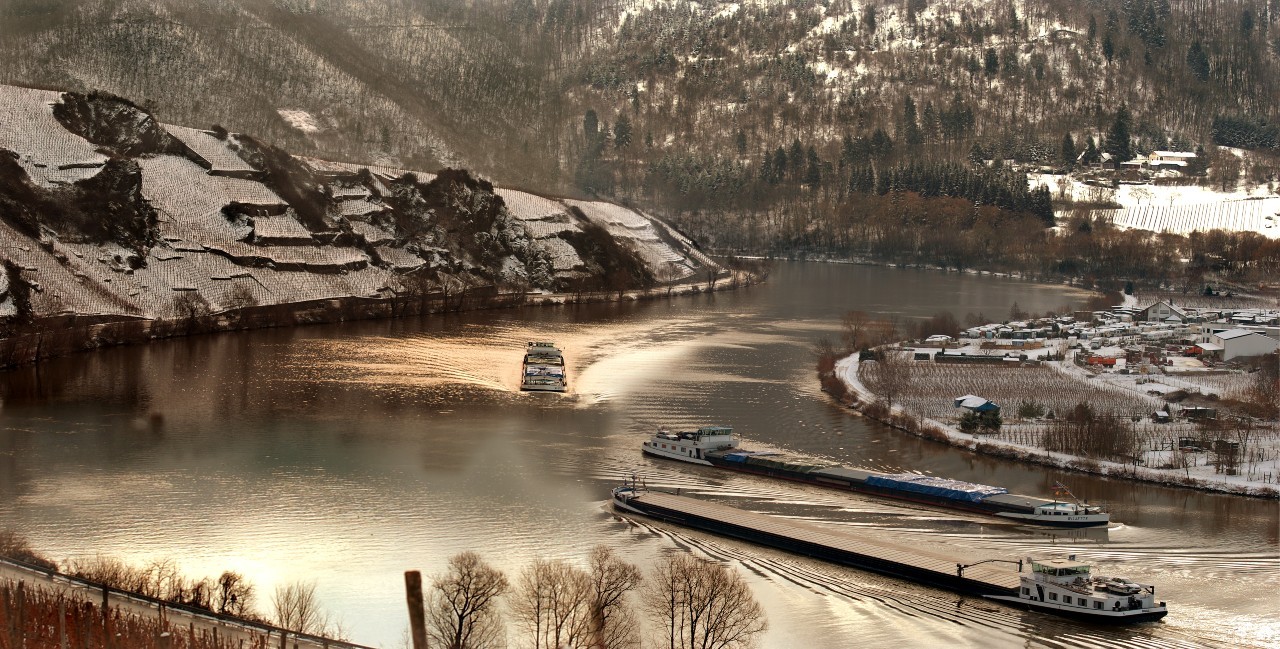
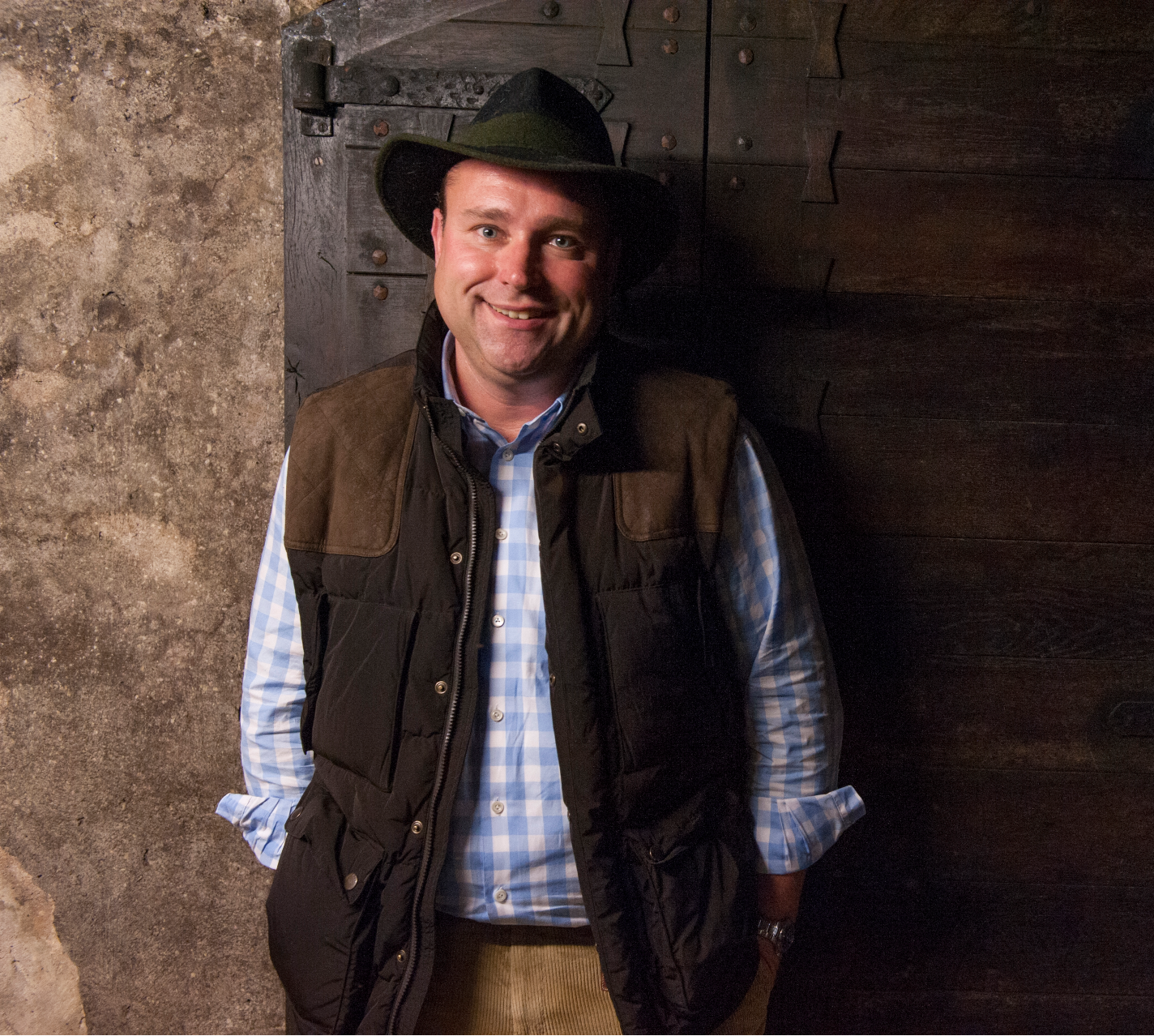
Winemaking and philosophy
The work in the vineyard and the cellar is, however, oriented towards methods from past centuries, when, as in the vineyards of Nik Weis, the homogenisation of the products was not yet important. In the vineyard, the emphasis is of course on single-pile cultivation, sustainable soil care, a lot of manual labour and late harvesting (also by hand, of course). Each vineyard is worked separately, and in the cellar, after careful pressing, the wines are also fermented separately. Since the establishment of the estate, industrial yeasts of pure culture have not been used in the cellar, because here too, nature is at the forefront during fermentation, and the yeasts from the vineyard and the flora of the cellar give rise to authentic and genuine wines. The individual character of a vineyard is thus preserved until the finished wine is bottled. Premium wines, whether dry or fruity, can be aged in traditional barrels after fermentation, giving them a final harmony and expression.
For Nik Weis, the credo is: balance, balance, balance. When the natural residual sugar, the invigorating acidity, the sometimes salty, sometimes smoky minerality and the ripe fruit aromas of the Riesling meet, the result is a unique taste experience that takes wine enjoyment to the highest level. Nik Weis and his estate represent the elegant, fine and expressive wine style of the Mosel, Saar and Ruwer regions, as it was celebrated in the early 20th century in the best houses of the old and new world.


